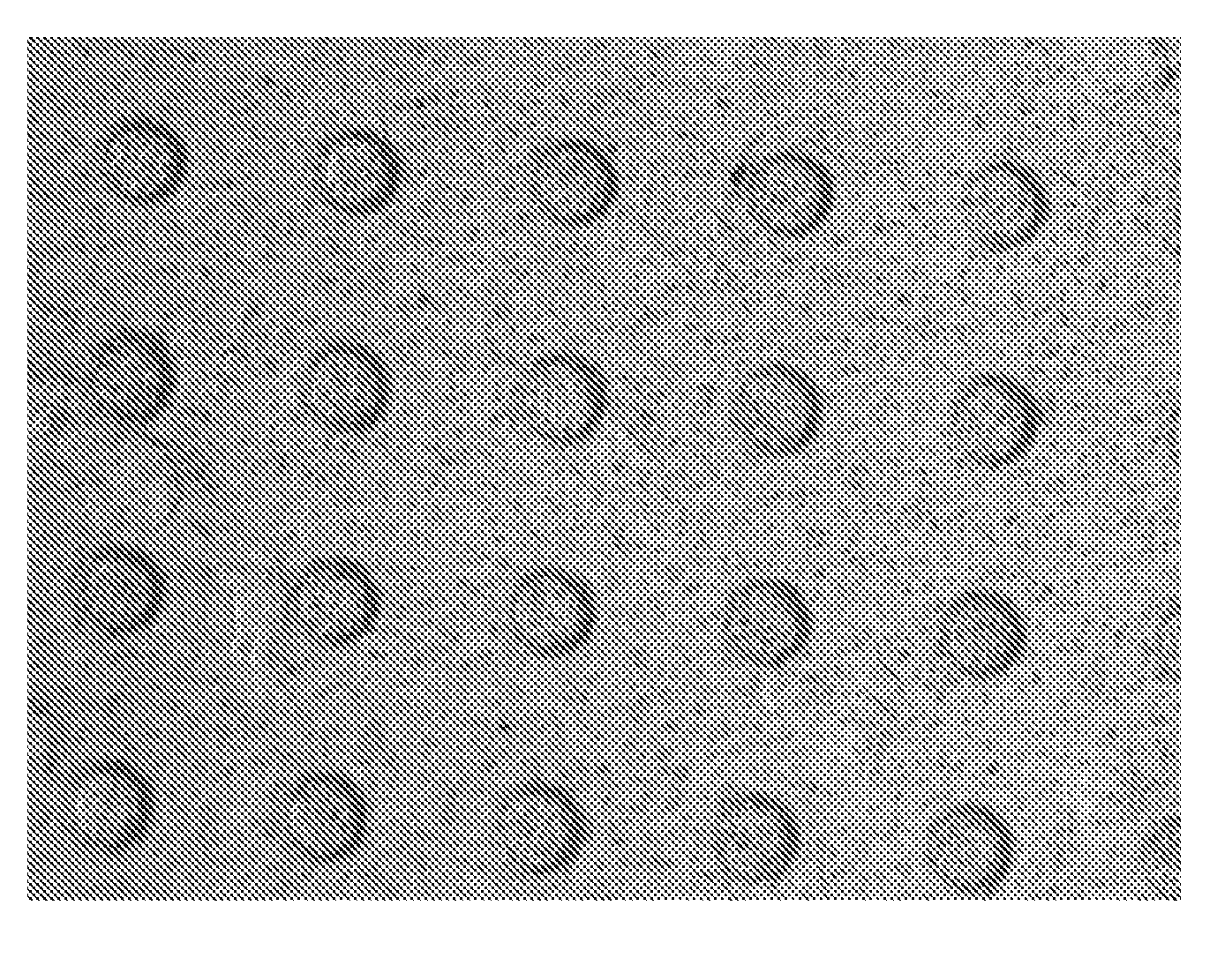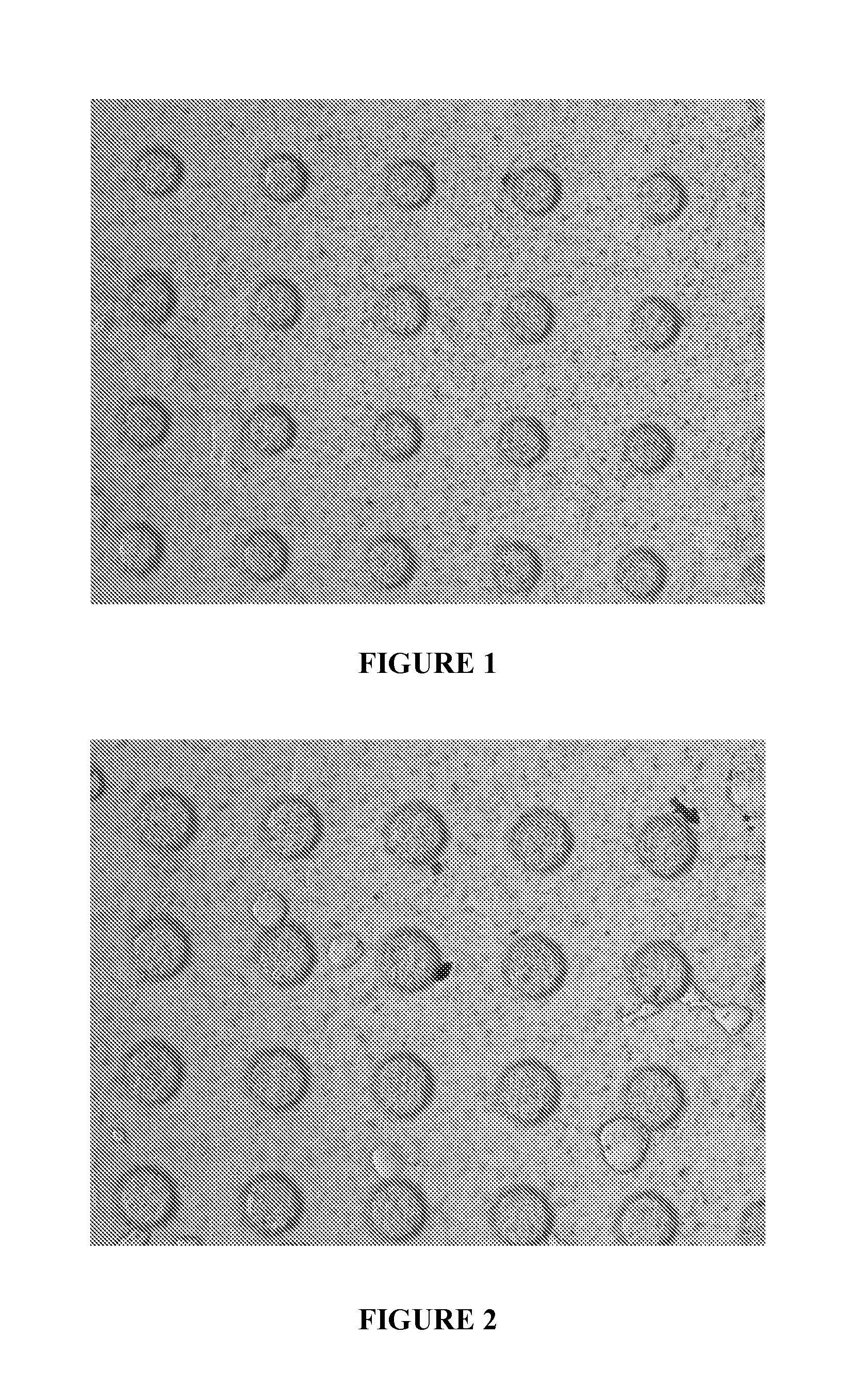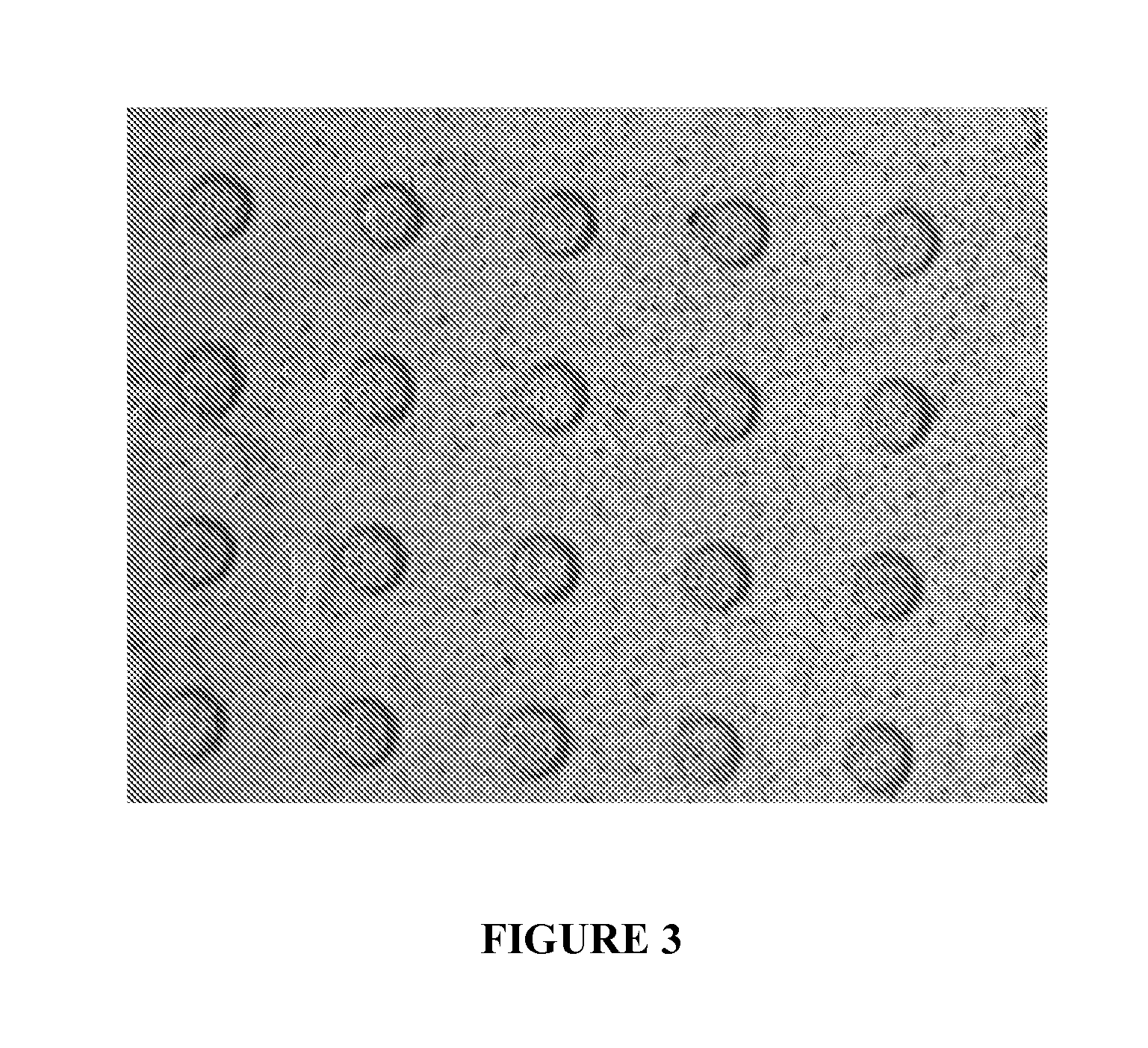Materials and methods for stress reduction in semiconductor wafer passivation layers
- Summary
- Abstract
- Description
- Claims
- Application Information
AI Technical Summary
Benefits of technology
Problems solved by technology
Method used
Image
Examples
example 1
Elongation / Breaking Strength—Dogbone Samples on Instron
[0156]Tensile strength and elongation were measured on an imide-extended bismaleimide resin that had been prepared according to U.S. Pat. No. 7,208,566 in order to demonstrate the mechanical characteristics of compositions of the invention. The resin used in this example was prepared according to Example 5 of that U.S. Pat. No. 7,208,566. The resin had been precipitated into acetone to remove any remaining lower molecular weight residues. In this form (designated as R1130) the approximate molecular weight of the imide extended bismaleimide is around 3,000 Daltons (and is therefore also known as BMI-3000). In this example, two cure conditions were examined: (a) cured via UV exposure only, and (b) UV exposure followed by a thermal post reaction. The UV process parameters were not optimized for intensity, wavelength or protection from O2 inhibition. Specimen dimensions were: 13 mm wide×1.3 mm thick. The photoinitiator (when present...
example 2
Trials Using Toluene as the Image Development Solvent
[0158]FIGS. 1-3 show the performance of the materials of the invention in the additional trials that illustrate the applicability of the compositions of the invention to photoimaging applications. Additional trials were performed using the low modulus, imide-extended BMI. Here and below, compound R1184, which was used as such imide-extended BMI, is the compound described in Example 5 of the above-mentioned U.S. Pat. No. 7,208,566, without a subsequent precipitation step, the compound having a molecular weight of about 2,000 Daltons. Compound R1184 was doctor-bladed onto ceramic wafers to form an even coating, followed by UV exposures through masks. The doctor-bladed films were exposed to a broad-spectrum UV light source with the mask interposed between the un-cured film and the light source. The photoimaged films were then developed using a jet of toluene.
[0159]The circular areas in the developed images directly correspond to opaq...
example 3
Trials Using Cyclohexanone as the Image Development Solvent
[0162]Cyclohexanone proved to be a suitable solvent for developing photoimaged patterns in compositions of the invention. In this example, the film was spin coated on wafers to achieve 13 um thickness. Coating conditions were: (1) spin 30 seconds at 590 rpm; (2) spin 30 seconds at 1196 rpm; (3) bake 30 minutes at 100° C. (surface is non-tacky). The imaged and developed pattern was characterized using a contact profilometer. In all cases, the replication of mask dimension in the imaged pattern was excellent with very good edge definition. Some of the developing with cyclohexanone was done using s spray device, but flooding followed by a simple rinse with acetone was just as effective. This demonstrates that compositions of the invention are suited to use as photoimagable passivation layers.
PUM
| Property | Measurement | Unit |
|---|---|---|
| Temperature | aaaaa | aaaaa |
| Fraction | aaaaa | aaaaa |
| Fraction | aaaaa | aaaaa |
Abstract
Description
Claims
Application Information
 Login to View More
Login to View More - R&D
- Intellectual Property
- Life Sciences
- Materials
- Tech Scout
- Unparalleled Data Quality
- Higher Quality Content
- 60% Fewer Hallucinations
Browse by: Latest US Patents, China's latest patents, Technical Efficacy Thesaurus, Application Domain, Technology Topic, Popular Technical Reports.
© 2025 PatSnap. All rights reserved.Legal|Privacy policy|Modern Slavery Act Transparency Statement|Sitemap|About US| Contact US: help@patsnap.com



